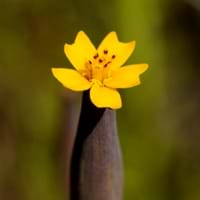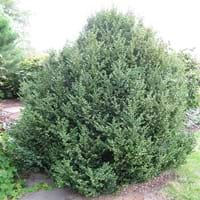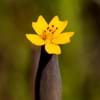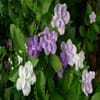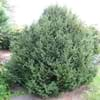Life Span
Annual
Perennial
Type
Flowering Plants
Broadleaf Evergreen
Origin
Mexico, Central America, South America
Hybrid origin
Types
Not available
Not Available
Habitat
Cultivated Beds
hedge rows, Shady Edge, Woodland Garden Dappled Shade
USDA Hardiness Zone
8-11
6-9
AHS Heat Zone
12 - 1
Not Available
Sunset Zone
A1, A2, A3, H1, H2, 1a, 1b, 2a, 2b, 3a, 3b, 4, 5, 6, 7, 8, 9, 10, 11, 12, 13, 14, 15, 16, 17, 18, 19, 20, 21, 22, 23, 24
21,22
Habit
Cushion/Mound-forming
Pyramidal
Flower Color
Yellow, Orange, Gold, Orange Red
Light Yellow
Flower Color Modifier
Bicolor
Bicolor
Fruit Color
Not Available
Not Available
Leaf Color in Spring
Green
Green, Dark Green
Leaf Color in Summer
Green
Dark Green
Leaf Color in Fall
Green
Dark Green
Leaf Color in Winter
Light Green
Dark Green
Leaf Shape
Pinnate
Pinnate
Plant Season
Spring, Summer, Fall
Spring, Summer, Fall, Winter
Sunlight
Full Sun, Partial Sun
Full Sun, Partial Sun
Type of Soil
Loam, Sand
Loam, Sand
The pH of Soil
Acidic, Neutral
Acidic, Neutral
Soil Drainage
Well drained
Well drained
Bloom Time
Indeterminate
Spring
Tolerances
Drought
Pollution
Where to Plant?
Ground
Container, Ground, Pot
How to Plant?
Divison, Layering, Stem Cutting
Root Division, Stem Cutting
Plant Maintenance
Medium
Medium
Watering Requirements
Requires regular watering
Needs more water during establishment, Never Over-water, occasional watering once established
In Summer
Lots of watering
Lots of watering
In Spring
Moderate
Moderate
In Winter
Average Water
Average Water
Soil pH
Slightly Acidic
Acidic, Neutral
Soil Type
Sandy
Loam, Sand
Soil Drainage Capacity
Well drained
Well drained
Sun Exposure
Part sun
Full Sun, Partial Sun
Pruning
Remove damaged leaves, Remove dead branches, Remove dead leaves
Prune ocassionally, Remove branches, Remove branches that rub together, Remove crossing or rubbing branches, Remove damaged leaves, Remove dead branches, Remove dead leaves, Remove dead or diseased plant parts
Fertilizers
All-Purpose Liquid Fertilizer
All-Purpose Liquid Fertilizer, Fertilize in early to mid-summer
Pests and Diseases
Red blotch
Red blotch
Plant Tolerance
Drought
Pollution
Flower Petal Number
Single
Single
Fragrant Bark/Stem
Yes
No
Foliage Texture
Fine
Fine
Foliage Sheen
Matte
Glossy
Attracts
Butterflies
Bees, Birds
Allergy
Not Available
Poisonous
Aesthetic Uses
Beautification, Decorating walls, Hanging Basket, Showy Purposes, Used as an interior landscaping species
Used for making hedges
Beauty Benefits
Not Available
Not Available
Environmental Uses
Air purification, Food for birds
Air purification
Medicinal Uses
Cancer, Diarrhea, Hepatitis, Inflammation, Wounds
Alterative, Antirheumatic, Arthritis, cathartic, Cholagogue, Detoxification, Diaphoretic, Febrifuge, HIV/AIDS, Homeopathy, Immunity, Odontalgic, Sedative, Tonic, Vermifuge
Part of Plant Used
Flowers
Flowers, Leaves, Wood
Other Uses
Air freshner, Condiment, For making oil for cosmetics, Garland, Making Sweet Scented Oil, Medicinal oil, Used as an ointment, Used as Ornamental plant, Used for fragrance, Used for its medicinal properties, Used for Landscaping
Used as a dye, Used for woodware
Used As Indoor Plant
Insignificant
Yes
Used As Outdoor Plant
Yes
Yes
Garden Design
Dried Flower, Landscape, Lawns and Turf
Container, Edging, Feature Plant, Foundation, Hedges, Mixed Border
Botanical Name
Tagetes subulata
BUXUS 'Green Mountain' COPF
Common Name
Tagetes Sabulata
Boxwood, Green Mountain Boxwood
In Hindi
Tagetes subulata
Buxus Green Mountain Tree
In German
Tagetes Subulata
Buxus Green Mountain Baum
In French
Tagetes Subulata
Buxus Green Tree Montagne
In Spanish
Tagetes Subulata
Buxus árbol verde de la montaña
In Greek
Tagetes Subulata
Buxus Green Mountain Tree
In Portuguese
Tagetes Subulata
Buxus Árvore verde da montanha
In Polish
Tagetes Subulata
Buxus Green Mountain Drzewo
In Latin
Tagetes Subulata
Buxus Viridis ligno
Phylum
Tracheophyta
Magnoliophyta
Class
Magnoliopsida
Magnoliopsida
Order
Asterales
Euphorbiales
Family
Asteraceae
Buxaceae
Clade
Angiosperms, Asterids, Eudicots
Angiosperms, Eudicots
Tribe
Tageteae
Not Available
Subfamily
Asteroideae
Not Available
Number of Species
Not Available
Season and Care of Tagetes Subulata and Buxus Green Mountain
Season and care of Tagetes Subulata and Buxus Green Mountain is important to know. While considering everything about Tagetes Subulata and Buxus Green Mountain Care, growing season is an essential factor. Tagetes Subulata season is Spring, Summer and Fall and Buxus Green Mountain season is Spring, Summer and Fall. The type of soil for Tagetes Subulata is Loam, Sand and for Buxus Green Mountain is Loam, Sand while the PH of soil for Tagetes Subulata is Acidic, Neutral and for Buxus Green Mountain is Acidic, Neutral.
Tagetes Subulata and Buxus Green Mountain Physical Information
Tagetes Subulata and Buxus Green Mountain physical information is very important for comparison. Tagetes Subulata height is 30.50 cm and width 30.50 cm whereas Buxus Green Mountain height is 152.40 cm and width 91.44 cm. The color specification of Tagetes Subulata and Buxus Green Mountain are as follows:
Tagetes Subulata flower color: Yellow, Orange, Gold and Orange Red
Tagetes Subulata leaf color: Green
Buxus Green Mountain flower color: Light Yellow
- Buxus Green Mountain leaf color: Green and Dark Green
Care of Tagetes Subulata and Buxus Green Mountain
Care of Tagetes Subulata and Buxus Green Mountain include pruning, fertilizers, watering etc. Tagetes Subulata pruning is done Remove damaged leaves, Remove dead branches and Remove dead leaves and Buxus Green Mountain pruning is done Prune ocassionally, Remove branches, Remove branches that rub together, Remove crossing or rubbing branches, Remove damaged leaves, Remove dead branches, Remove dead leaves and Remove dead or diseased plant parts. In summer Tagetes Subulata needs Lots of watering and in winter, it needs Average Water. Whereas, in summer Buxus Green Mountain needs Lots of watering and in winter, it needs Average Water.
